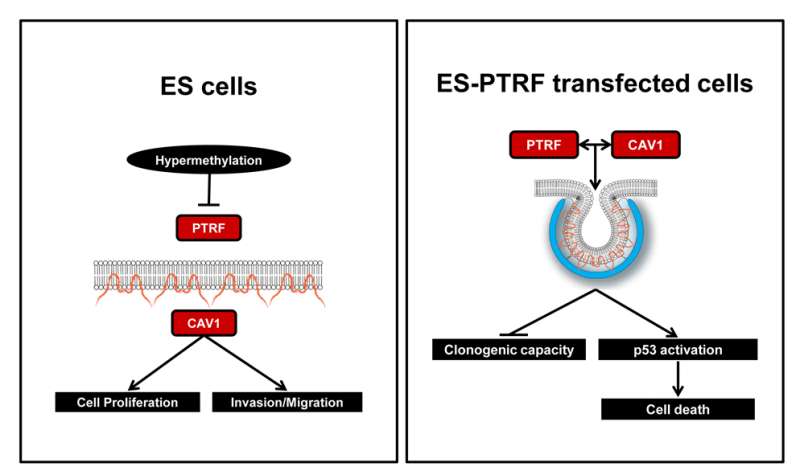The first analysis of Ewing's sarcoma methyloma opens doors to new treatments

Researchers at the Bellvitge Biomedical Research Institute have described the methylation profile of Ewing's sarcoma (ES), a cancer of bone and soft tissues that mainly affects children and teenagers. Their analysis has unveiled the potential of the PTRF gene as a prognostic marker of the disease and as a possible future therapeutic target in conjunction with the new genomic editing tools available.
"This is the first time that the methylation profile of Ewing's sarcoma has been described," explains Dr. Òscar Martínez-Tirado, lead author of the study. DNA methylation is a type of epigenetic modification capable of controlling gene expression—it can activate or deactivate genes associated with characteristics and processes in organisms, including the development of tumors. Using bioinformatic tools, the research team looked for common elements that allowed them to relate the set of differentially hypomethylated or hypermethylated genes they found in the tumor samples.
The researchers identified a group of 12 genes related to the structure of the cell membrane; among them, the precursor of the protein PTRF particularly drew their attention by its relation with the caveolae, small invaginations that are present in the membrane of some cells; the IDIBELL group has extensive experience in the study of these structures and their relationship with ES.
The team correlated the presence of PTRF in samples from 67 patients. "Initially, we saw that those patients who express PTRF have a better survival, therefore, we could consider this protein as a potential marker of prognosis of the disease," concludes Martinez-Tirado.
Normal cells with caveolae express both the PTRF protein and caveolin-1 (CAV1), another protein related to caveolae formation. In contrast, tumor cells in ES do not have caveolae, nor express PTRF. "This made us think about the possibility of exogenously reintroducing the precursor gene PTRF into the study cell lines," explains the researcher. "In those that also expressed CAV1, the reintroduction of PTRF triggered caveolae formation. For tumor cells, this modification of the structure is so stressful that it destroys them." In addition, researchers have shown that the formation of the caveolae in these cells activates a known cell death signaling pathway promoted by the p53 protein.
Current epigenetic drugs are nonspecific, but new CRISPR genomic editing tools have the potential to be used to demethylate specific genes from a tumor cell in the future. "If we are able to act specifically on the PTRF promoter gene so that the protein is expressed at normal levels, we would induce cell death, and therefore, we would have a promising new personalized therapeutic option for ES."
More information: Juan Huertas-Martínez et al, DNA methylation profiling identifies PTRF/Cavin-1 as a novel tumor suppressor in Ewing sarcoma when co-expressed with Caveolin-1, Cancer Letters (2016). DOI: 10.1016/j.canlet.2016.11.020















